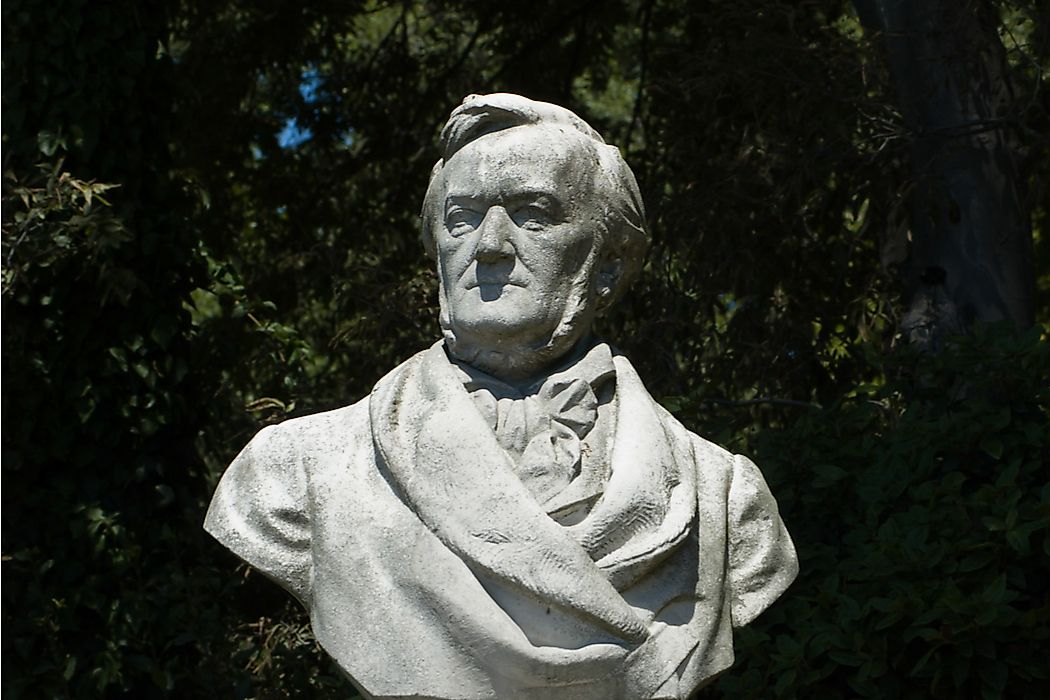

From the Festspielhaus, according to the media theorist Friedrich Kittler, “the darkness of all our cinemas derives.”īayreuth’s technical achievements predicted cinematic sleights of hand. The inaugural performances took place in a near-blackout. The composer had intended as much, saying that the stage picture should have the “unapproachability of a dream vision.” The orchestra was hidden in a sunken pit known as the “mystic abyss” its sound wafted through the room as if it were transmitted by a speaker system. The Viennese critic Eduard Hanslick, no friend of Wagner’s, felt that he was looking at a “bright-colored picture in a dark frame,” as in a diorama display. When the lights went down at the Bayreuth Festspielhaus in 1876, for the première of the “Ring of the Nibelung” cycle, a kind of cinema came into being. When Hollywood talks about Wagner, it is often-consciously or not-talking about itself. But that uncertainty also mirrors the film industry’s own ambiguous role as an incubator of heroic fantasies, which can serve a wide range of political ends. Like operagoers across the generations, filmmakers have had trouble deciding whether Wagner is an inexhaustible store of wonder or a bottomless well of hate. This contradictory swirl of associations mirrors the composer’s fractured legacy: on the one hand, as a theatrical visionary who created works of Shakespearean breadth and depth on the other, as a vicious anti-Semite who became a cultural totem for Hitler. “The Ride of the Valkyries,” from the opera “Die Walküre,” has been featured in hundreds of films and television shows throughout the past century. And Hollywood has drawn repeatedly from Wagner’s gallery of mythic archetypes: his gods, heroes, sorcerers, and questers. His informal system of assigning leitmotifs to characters and themes became a defining trait of film scores. Cinema’s integration of image, word, and music promised a fulfillment of the idea of the Gesamtkunstwerk, or “total work of art,” which Wagner propagated at one stage of his career. But the Wagnerization of film goes deeper than that.
Wagner composer android#
A colorful-and often shady-array of Wagner enthusiasts have appeared onscreen, from the woebegone lovers of Robert Siodmak’s noir “Christmas Holiday” to the diabolical android of Ridley Scott’s “ Alien: Covenant.” The composer himself is portrayed in more than a dozen movies, including Tony Palmer’s extravagant, eight-hour 1983 bio-pic, starring Richard Burton.

Most indelibly, Francis Ford Coppola’s “ Apocalypse Now” (1979) upends Griffith’s racial duality, making white Americans the heralds of destruction: a helicopter squadron blares the “Ride” as it lays waste to a Vietnamese village.Īction sequences are only one facet of Wagner’s celluloid presence. In John Landis’s “ The Blues Brothers” (1980), the “Ride” plays while buffoonish neo-Nazis chase the heroes down a highway and fly off an overpass. In “ What’s Opera, Doc?,” Elmer Fudd chants “Kill da wabbit” while pursuing Bugs Bunny. The “Ride” turns up in a particularly dizzying variety of scenarios.
Wagner composer tv#
More than a thousand movies and TV shows feature the composer on their soundtracks, yoking him to all manner of rampaging hordes, marching armies, swashbuckling heroes, and scheming evildoers. “The Birth of a Nation” set the pace for a century of Wagnerian aggression on film. Another card spells out what kind of nation Griffith wants to see born: “The former enemies of North and South are united again in common defence of their Aryan birthright.” The score for this sequence is dominated by Richard Wagner: a passage from his early opera “Rienzi,” followed by a modified version of “The Ride of the Valkyries,” from “Die Walküre.” At the moment of triumph-“Disarming the blacks,” the title card reads-Wagner gives way to “Dixie,” the unofficial anthem of the South. In the movie’s climactic scene, Klan members ride forth on horses to save a Southern town from what the film characterizes as oppressive African-American rule. The film, set during and after the Civil War, is based on “The Clansman: An Historical Romance of the Ku Klux Klan,” a baldly racist novel by Thomas Dixon, Jr. It was advertised as the most amazing motion picture ever made-the “eighth wonder of the world.” Subsequent showings featured orchestras of up to fifty musicians playing a multi-composer score assembled by the movie-music pioneer Joseph Carl Breil.

In February, 1915, D. W. Griffith’s silent film “ The Birth of a Nation” opened at Clune’s Auditorium, in Los Angeles. This content can also be viewed on the site it originates from.


 0 kommentar(er)
0 kommentar(er)
